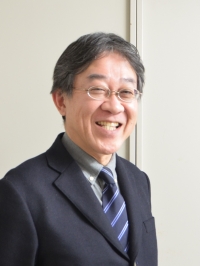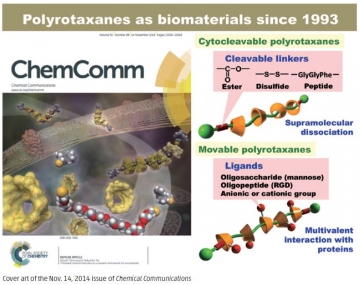Controlling multipotent stem cell differentiation with molecularly-tuned movable surfaces
PDF Download
- Controlling stem cell differentiation with movable surfaces

Nobuhiko Yui
Professor of Organic Biomaterials at TMDU
Dr. Yui started his academic career at Tokyo Women’s Medical University as an Assistant Research Professor after completing his PhD at Sophia University in 1985. He then joined the Japan Advanced Institute of Science and Technology (JAIST) in 1993 as an Associate Professor and became a Professor in 1998. Since 2011 he has been a Professor at TMDU as well as Professor Emeritus at JAIST. He now serves as President of the Japanese Society for Biomaterials.
A: Mesenchymal stem cells (MSCs) are “multipotent” because they can differentiate into so many cell types, depending on the environment in which they find themselves. Clinical studies are currently underway to see if injecting mesenchymal stem cells can help treat conditions like osteoarthritis, Crohn’s disease, or multiple sclerosis by allowing the body to repair itself. In our research, we looked for ways to culture MSCs so that they differentiate into the desired cell types.
A: One of the most important signals that controls the fate of stem cells is the molecular mobility of the surfaces to which they attach. MSCs that adhere to less mobile surfaces tend to spread out by creating actin fibers, and become osteogenic, bone-forming cells. In contrast, MSCs on highly mobile surfaces are more likely to become muscle or fat cells. Here, we have developed a process of culturing stem cells on polyrotaxane (PRX), a novel supramolecular polymer whose surface mobility can be easily tuned owing to its interlocking molecular assembly.
A: PRX has many excellent features. By changing the amount of α -cyclodextrin threaded on a linear polyethylene glycol chain, we can alter its physical properties, including its molecular mobility. Stiffness of materials have been known to affect cell fate. However, the stiffness at the interface with the body is not so precisely controlled when implanted in the body. A main accomplishment of our research is to utilize the controlled molecular mobility of supramolecular PRX at the interface with cells in order to explore a wide range of applications using stem cells, including tissue regeneration and repair.

A: Stem cell differentiation is controlled by the cytoskeleton — the internal scaffold responsible for the cell’s shape — which changes as the cells are grown on artificial materials. We hypothesize that the Rho family of small GTPases that control cytoskeletal organization is universally modulated in cells via altering the surface molecular mobility of PRX. The signaling cascade can easily reach every part of a cell, and has important implications not only for tissue engineering, but also for treating diseases such as Alzheimer’s, Parkinson’s, and amyotrophic lateral sclerosis.

